Pot Roast – A Classic American Meal
Pot roast is a method of slow-cooking a tough cut of meat, usually beef, in a covered pot or Dutch oven. The process involves braising the meat by searing it first and then simmering it in a liquid until it becomes tender and flavorful. The long, slow cooking process allows the collagen in the tough meat to break down into gelatin, resulting in a moist and tender roast.
Typically, a pot roast includes vegetables such as carrots, potatoes, and onions, along with seasonings and a flavorful liquid like broth or wine. The combination of meat, vegetables, and liquid is cooked together to create a hearty and satisfying one-pot meal.
Who Invented Pot Roast?
The concept of slow-cooking tough cuts of meat in a pot or Dutch oven has a long history and likely developed independently in various cultures. There isn’t a specific individual credited with “inventing” pot roast. Instead, this cooking method likely evolved over time as a practical way to make tougher cuts of meat more palatable.
Historically, slow-cooking methods were employed out of necessity to make use of less tender cuts of meat that were more affordable. By simmering or braising the meat slowly over a low flame, people could break down the tough connective tissues and collagen in the meat, transforming it into a flavorful and tender dish.
Pot roast, in the sense of cooking meat with vegetables in a covered pot, is a traditional and rustic method found in many cuisines around the world. It’s not so much the invention of a single person but rather a culinary technique that has been passed down through generations and adapted by various cultures based on available ingredients and cooking traditions.
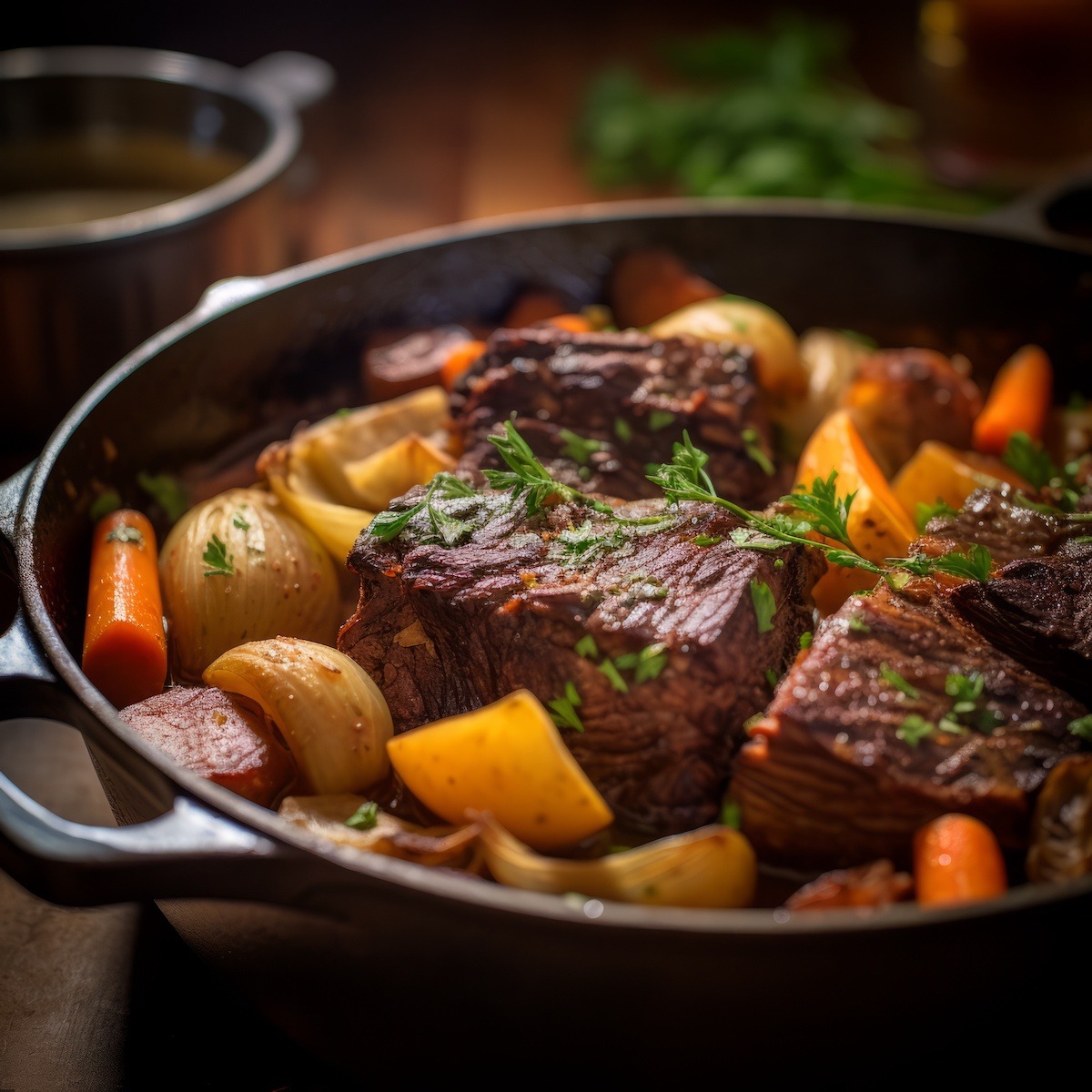
How Did Pot Roast Become Part of the American Cuisine?
Pot roast became a significant part of American cuisine due to several factors, including historical cooking methods, the availability of certain cuts of meat, and the influence of diverse cultural traditions. Here’s a brief overview of how pot roast became popular in American cooking:
- Colonial Roots: In colonial America, settlers adapted their cooking techniques to the resources available. Slow-cooking methods, such as pot roasting, were practical for making tougher cuts of meat more palatable. The use of one-pot meals with root vegetables was efficient and well-suited to the demands of frontier life.
- Affordability and Utilization of Tough Cuts: Pot roast was an economical and efficient way to utilize tougher cuts of meat, such as chuck roast or brisket. These cuts were less expensive but required slow cooking to break down the collagen and make the meat tender. Pot roast allowed families to make the most of what they had.
- Migration and Culinary Influences: As people migrated across the United States, they brought their culinary traditions with them. Pot roast, a versatile and adaptable dish, easily integrated into the diverse regional cuisines that developed. Different variations of pot roast emerged, reflecting the ingredients available in various regions.
- Advancements in Cooking Technology: The development of modern kitchen appliances, such as the oven and the slow cooker, further popularized pot roast. These tools made it easier for home cooks to prepare this dish without constant attention and supervision.
- Comfort Food and Nostalgia: Pot roast became associated with comfort food and the warmth of home-cooked meals. It is a dish that many people fondly remember from their childhoods, contributing to its enduring popularity.
- Cookbooks and Media: The publication of cookbooks and the influence of cooking shows and media helped spread the popularity of pot roast. Recipes were shared, adapted, and refined, contributing to a shared culinary tradition.
Today, pot roast is considered a classic American comfort food. While it may not have a specific inventor, its evolution and integration into American cuisine highlight the adaptability of cooking practices and the influence of various cultural and historical factors.
Pot Roasting, the Verb
Pot roasting is a cooking method that involves slow-cooking a tough cut of meat in a covered pot or Dutch oven. The process combines searing and braising to create a flavorful and tender dish. Here’s a basic overview of the pot-roasting technique:
- Selecting the Meat: Choose a tough cut of meat suitable for slow cooking. Common choices include chuck roast, brisket, or other cuts with a higher collagen content.
- Seasoning and Searing: Season the meat with salt, pepper, and other desired spices. In a hot pan or skillet, sear the meat on all sides to develop a flavorful crust. This step helps enhance the overall taste of the dish.
- Preparing Vegetables: Chop vegetables such as carrots, potatoes, and onions into large chunks. These vegetables will be cooked along with the meat, adding flavor and creating a one-pot meal.
- Braising: Place the seared meat in a pot or Dutch oven and arrange the vegetables around it. Pour in a liquid, such as beef broth, wine, or a combination of both. The liquid should partially cover the meat but not completely submerge it.
- Simmering or Roasting: Cover the pot with a lid and cook the meat in an oven at a low temperature or on the stovetop at a simmer. The slow and gentle cooking process allows the collagen in the tough meat to break down into gelatin, resulting in a tender and succulent roast.
- Checking Doneness: Pot roast is done when the meat is fork-tender and easily pulls apart. The cooking time can vary depending on the size and thickness of the meat, but it often takes several hours.
- Serving: Once the pot roast is cooked, serve it with the vegetables and some of the cooking liquid as a flavorful gravy.
Pot roasting is a versatile method that can be adapted to various flavors and seasonings. It’s a popular way to turn economical cuts of meat into a delicious and comforting meal, and the one-pot nature of the dish makes it convenient for home cooks.
Pot Roast
Ingredients
- 4 pound rump roast
- garlic powder to taste
- parsley flakes
- 2 tablespoons olive oil
- 1 medium onion chopped into bite size pieces
- 6 stalks celery chopped into bite size pieces
- 6 carrots chopped bite size pieces
Instructions
- Preheat oven 400° F.
- Score fat on rump in a criss-cross.
- Rub with 1 tablespoon of balsamic vinegar.
- Sprinkle roast with garlic powder & parsley flakes.
- In roasting pan, brown all sides in 2 tablespoons olive oil.
- With fatty side facing up, add chunks of carrot, celery, and onions around roast.
- Add 1 to 1½ cups water.
- Without lid, place in oven 10 minutes.
- Cover with lid tightly, reduce heat to 350° F for 2½ to 3 hours depending on size. When pierced easily with fork, it is done.

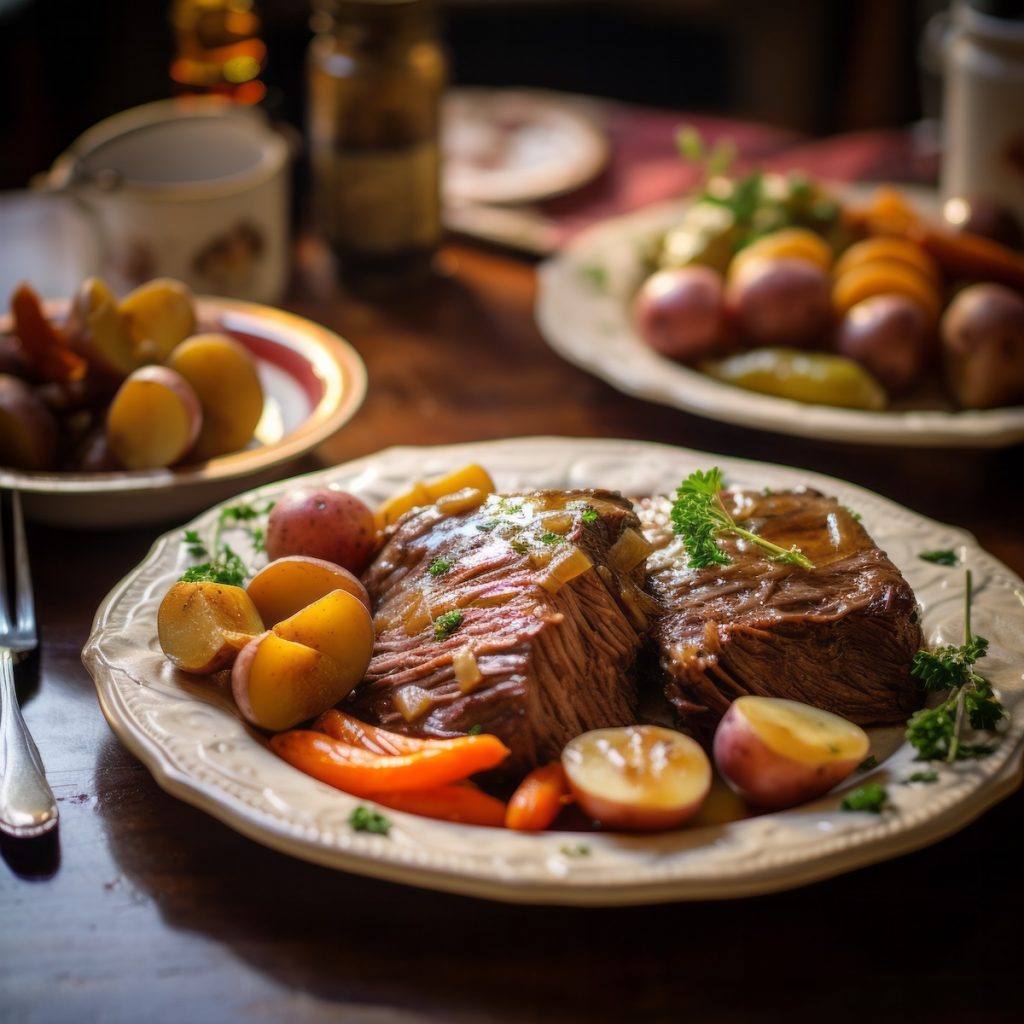
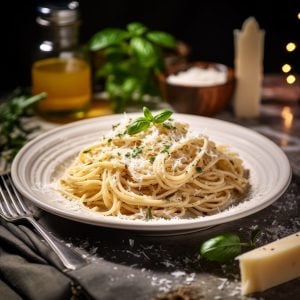



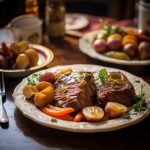
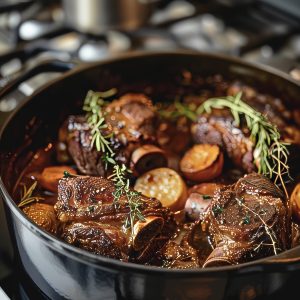
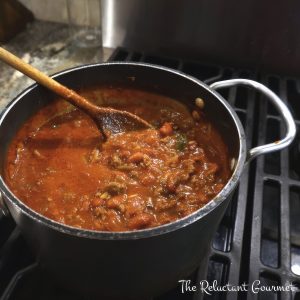
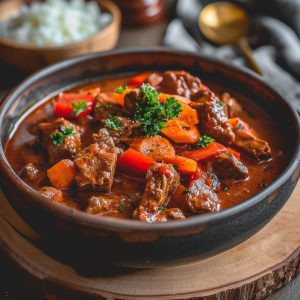
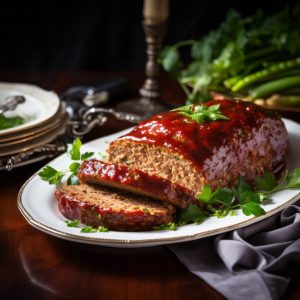
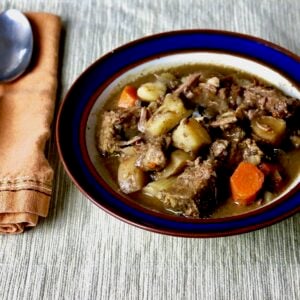

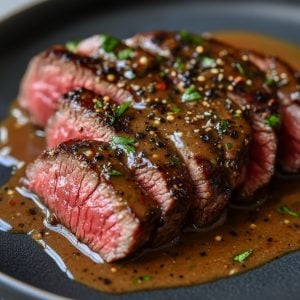
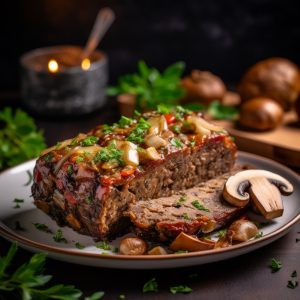


One Response
That looks like some real juicy meat. I think I’m going to give this a go tonight.